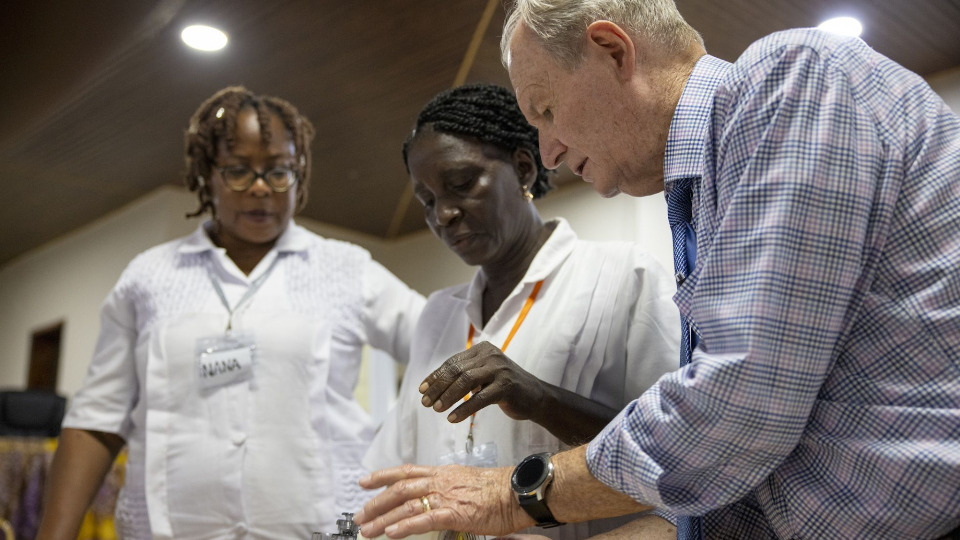
This story appears here courtesy of TheChurchNews.com. It is not for use by other media.
By Mary Richards, Church News
Training in Sierra Leone this month gave healthcare professionals the skills and knowledge they need to save the lives of women and babies after childbirth.
Called Helping Babies Breathe, the training enabled one nurse midwife just a few days later to save a baby’s life because of what she had learned.
She was at one of the clinics in the West African country and a baby was born that looked lifeless. In the past, the baby might have been wrapped up and set aside, with the mother told that there was nothing that could be done. But the nurse had a bag and a mask ventilator in her bag that she had been given with the training, and she resuscitated the baby.
The Church of Jesus Christ of Latter-day Saints and Project HOPE — a global health and humanitarian relief organization — provided the weeklong training and equipment in a “train the trainer” or “cascade training” model. They trained around 24 midwives in newborn resuscitation and maternal postnatal care, who then take that training back to their communities where they will train others.
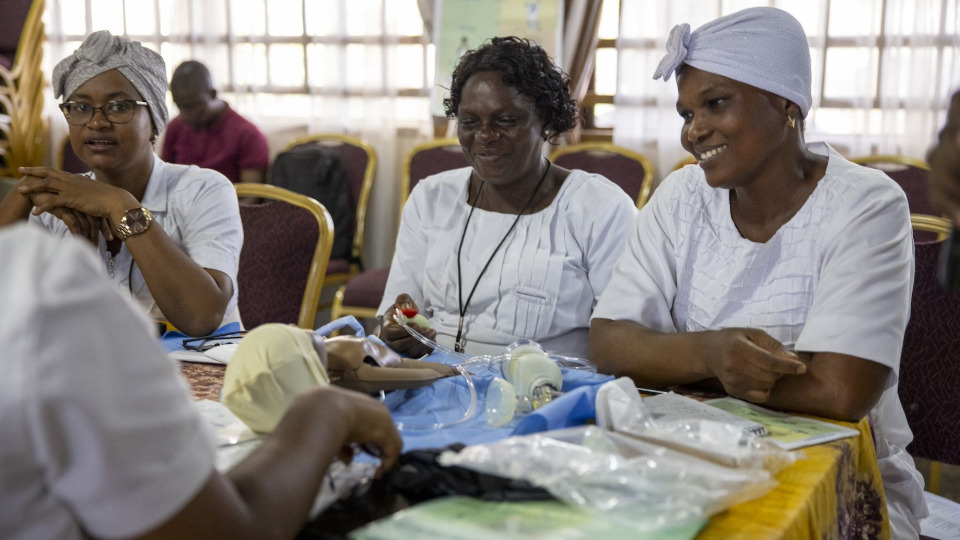
Project HOPE’s Kristin Anderson said the Church generously donated all teaching and training materials for when the midwives then replicate their training with other health care providers within their facilities.
“Sierra Leone has among the highest maternal and neonatal mortality rates in the world, and most of these deaths could be prevented with timely, evidence-based care,” Anderson said.
Four volunteers from the Church traveled to Western Area Rural — a rural part of Sierra Leone about an hour from Freetown — to provide the critical training and support for a week in January. The group included Dr. Fred Langeland, a board-certified OB/GYN who previously worked at LDS Hospital in Salt Lake City for 35 years.
Langeland said it is estimated Sierra Leone sees one in 20 women die because of pregnancy or childbirth — and has a significantly high infant mortality rate of 78 deaths per 1,000 live births. But said it can be difficult to get accurate statistics with so many deliveries done in non healthcare facilities.
“The number one cause of infant mortality is asphyxiation,” Langeland said, “so we train the midwives on how to resuscitate a baby and to bag and mask a baby and to keep a baby going alive at birth.”
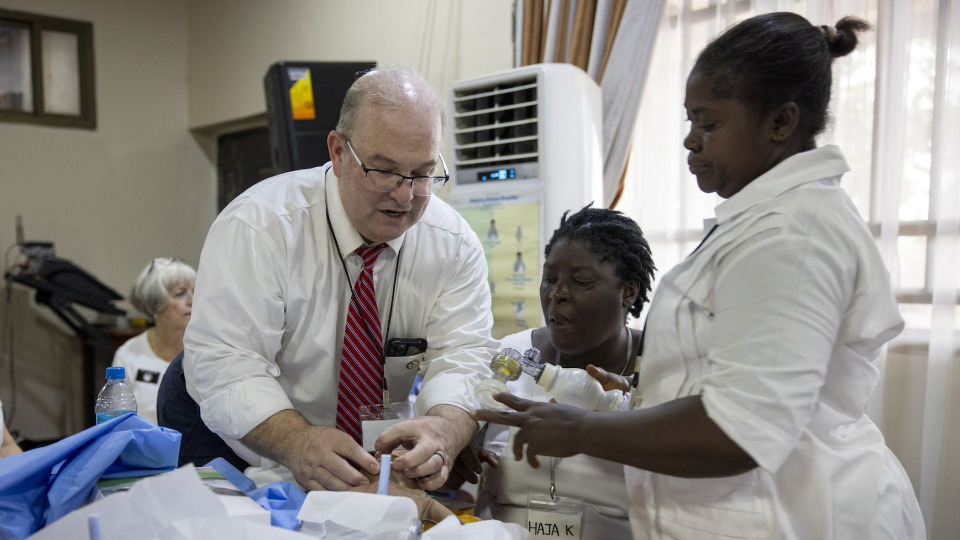
He said the number one cause of maternal mortality is bleeding after birth: “We train them on how to prevent postpartum hemorrhage, then how to treat it if it should arise.”
The last training module involved essential care of every baby and every small baby. It is essential to teach nurses and mothers to look for warning signs in babies so that they are eating well and can thrive, he said.
“Our experience has been that they have been very gracious, very appreciative, very loving and very eager to learn and apply the techniques that we teach them,” Langeland said. “It’s been well shown in multiple studies now in emerging economies that if these principles are adopted and used consistently, we can reduce the infant mortality and the maternal mortality by 50%.”
Langeland said Project HOPE and the Church have people in the country on the ground who support the training. Then, they follow up to make sure the equipment is being used and is working and that the nurse midwives are able to practice what they learned until they become proficient at it.
For the past 10 years, Langeland and his wife, Shirley Langeland, have been volunteering with the Church to do these trainings. He said the group of volunteer doctors have been to several countries in Central and South America, Africa and the Middle East.
With the Langelands on this trip was Dr. Mark Sheffield, a board-certified neonatologist who works full-time but has volunteered with the Church for over 18 years, and JoAnn Abegglen, who is an associate professor of nursing at Brigham Young University who took vacation time to go.
“Everything we do is paid for by the humanitarian gifts to The Church of Jesus Christ of Latter-day Saints,” Langeland said.
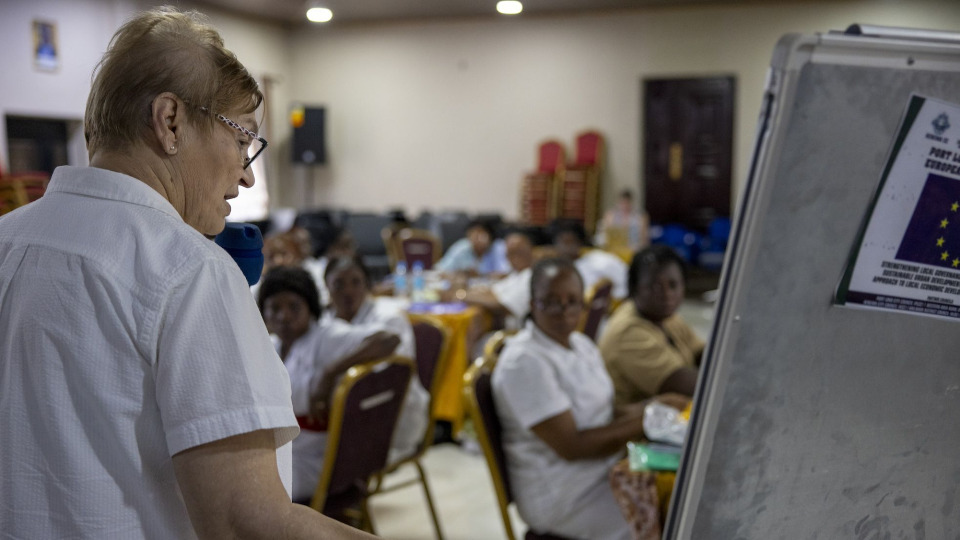
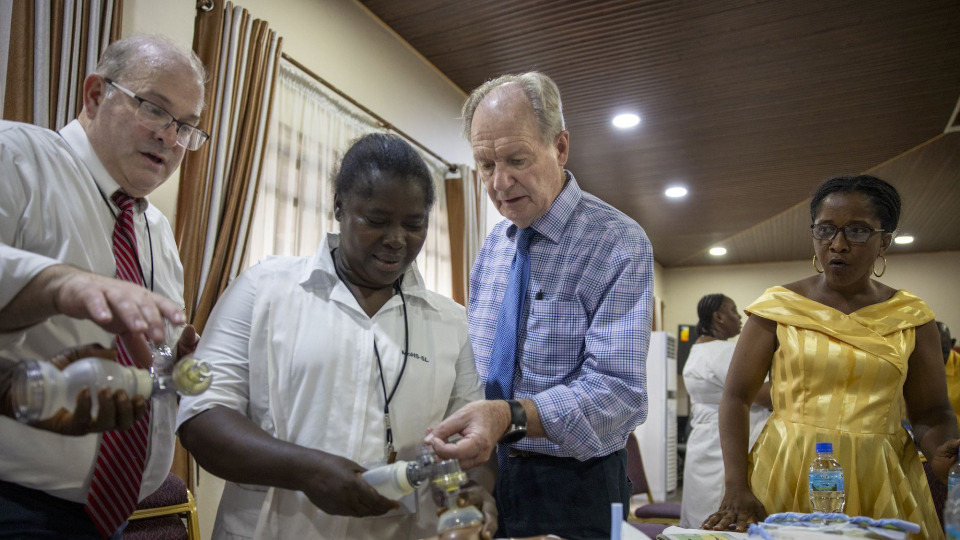
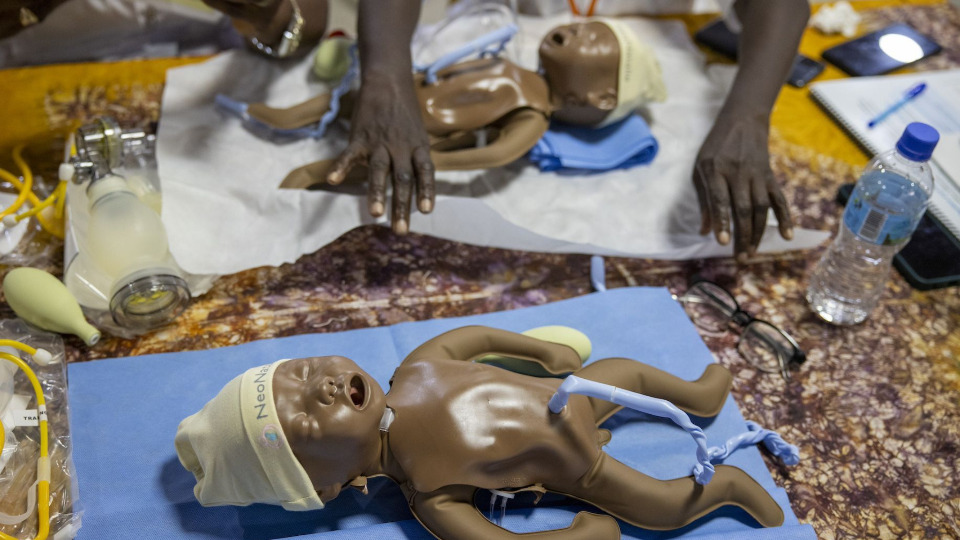
sierra-leone-project-hope-6.jfif
Models of babies are used for training purposes in the Helping Babies Breathe class organized by Project HOPE and The Church of Jesus Christ of Latter-day Saints in Western Area Rural, Sierra Leone, January 10, 2024. Photo by James Buck, Project Hope, courtesy of Church News. All rights reserved.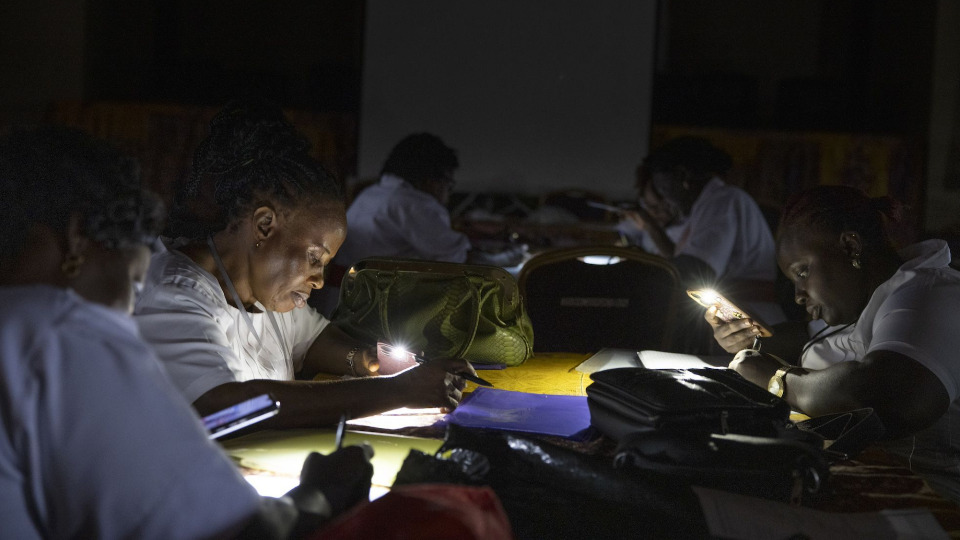
Copyright 2024 Deseret News Publishing Company.